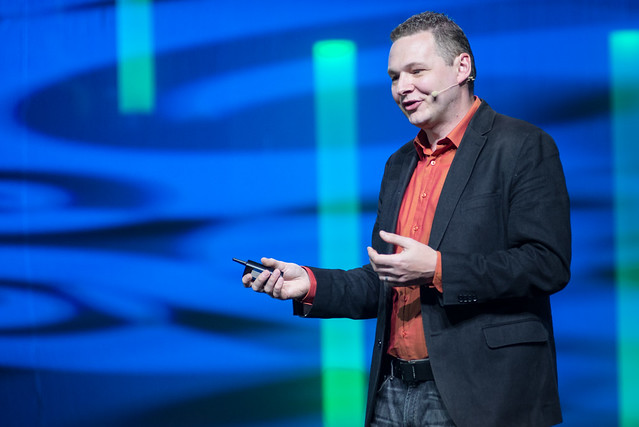Nick Halstead, Founder & CTO, DataSift Inc
How Social Sharing Built a Billion Dollar Market
Nick Halstead has been at the heart of the social sharing economy for five years, creating the world’s first social sharing button and building a business upon the data that it generated. Nick will talk about the evolution of the sharing economy, from the early days of RSS and TweetMeme, to the prominence of social now and give his insight on the future of sharing in a social driven world.

Photo by: “Luca Sartoni – http://www.heisenbergmedia.com/”
What Nick has created, is powered by the sharing economy. Is going to tell us the story of how he got to where he is now.  It started off with the RSS icon and an argument with his Dad. His Dad did not understand it, why it was in the browser. He could not get to the content he wanted to. THe original name was fav.or.it. It was how o take huge amount of data and use social signals (interaction with content) and use that as in indicator of whether that was good or bad. Engagements, votes and the source. It was OK
Then Twitter came along. And Nick saw that the data from Twitter could be used as a replacement for the signals. A wider set of signals. Without a lot of people using favorit, then little signal. So build on top of Twitter, where even then 1 of 4 were links, so pulled our what was hot. We brought in the idea of the authorit yof the people, not the publisher source. We looked at how people sharing links, who reshared.  Then provided a sharing button, the RT button to put on signs. It wasn’t really a ‘invention; for an evolution. In 9months were doing 1.5b page impressions a day. That was all about sharing economy, share what was the best content. Behind that, we were developing a data business. We had access to the data, people were asking us to help them understand the behaviour of the users. We now have many other social networks as well, to share content out there
YOu have now got share buttons in 50% of sites, to allow content to be put out to social networks.  When Nick joined Twitter, it was few, now >500m tweets a day. Growing all the time.
How is the data use? There is a symbiotic relationship between people on the networks and the companies that use the data. Look at when Alex Ferguson resigned, the news broke and spread quickly via Twitter. Businesses are using this to drive actions, eg something that would have impact on stock price.  4 years go, it was pretty simplistic. Keywords, plotting trends etc. Look at something like SecondSync, which is using social channels to assess TV popularity. They are tracking all the tv programmes and assessing impacts. Can assess popularity.  The data gets sold onto the programme makers, so they can see how the programme was being received minute by minute. You have the network who cares about demographics and then the ads care about their placements, their ads.  That’s why programmes use hashtags.
We talk about the value with no context. Whether people who mentioned you were actual customers. Now that is changing. A company called Phace (Face?) getting info and using the social info to assess who is talking.
Bloomberg supply Twitter data into their terminals, so traders can track things. The social data has changes things.  But how are you empowered rather than companies? Now you can impact Bloomberg and the markets. A football shirt company uses social signal to determine the favourite players so they can impact the supply chain and get right volume into the marketplace. A retailer is using geolocation to see where people are shopping and use it to influence if they should open a store there.
There are huge advances in being able to understand intent. Bringing in context. If you have context, you can ask questions. Eg who should I then sponsor? Another way is starting to join the data together. Starting to connect the data, to be able to prove the value, being able to understand social alongside other data to get the whole picture
Forrester is thinking that next year, social media marketing will be over $3.1b. Growth will come from China, connecting social activity to inshop activity. We’re going beyond the button, beyond the Like button are becoming less and less value. It is about implicit actions, rather than explicit. You can look at photos, at what is being said
It’s only going to keep in growing!